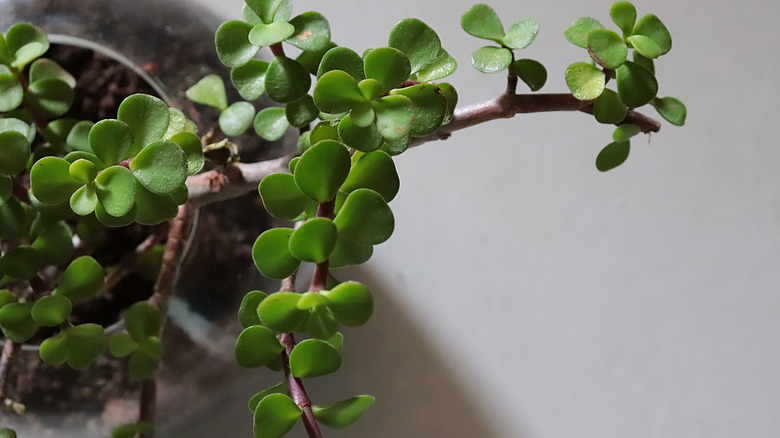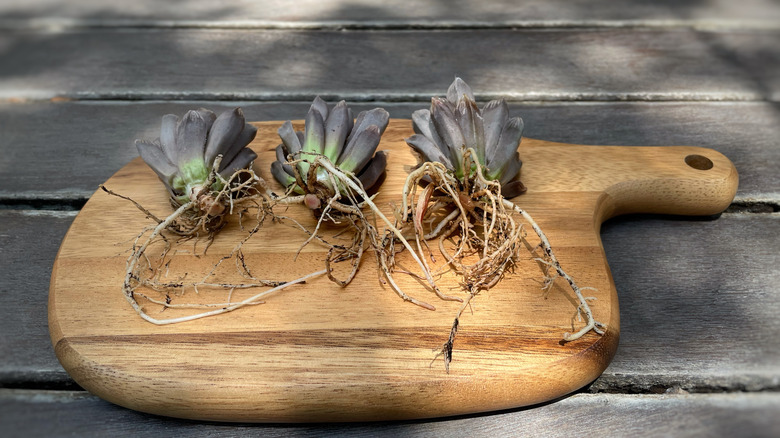Save A Jade Plant From Powdery Mildew With These Tips
We may receive a commission on purchases made from links.
Aside from the bite-sized beauty that succulents bring to homes and apartments, they're generally considered easy to care for. Jade plants are one of the best succulents to grow indoors because they are hardy plants that don't require a lot of water and last for generations. However, no plant survives without a little TLC, right?
Jade plants are not immune to many common pests and fungi, and you have to stay vigilant in order to diagnose problems quickly. Powdery mildew is one sneaky fungus that might harm your plant. While powdery mildew isn't deadly, the characteristic chalky-white residue can appear on jade plant leaves and stems and make a meal of your plant, leaving it in poor health. It typically starts with a dusty-looking mildew that eventually leads to discoloration and leaf distortion. As the fungus progresses, it might display brown lesions and eventually turn black. This is probably one of the clearest signs that your jade plant has a mildew problem.
There are a few things you can do to combat powdery mildew and prevent recontamination or its spread to other plants. This includes pruning to remove the infected leaves and stems, using fungicides, cleaning your gardening equipment to prevent contamination, and providing proper airflow to the plant to reduce its formation.
How to treat and prevent powdery mildew
Powdery mildew can be one of the many common problems for indoor jade plants since the humidity and temperature conditions indoors can be consistently milder than outdoor conditions. Powdery mildew needs high humidity and mild temperatures to thrive. The earlier you address the problem, the easier it will be to treat. For natural fungicides, you can use neem oil or a mixture of milk and water. Yep, milk can actually treat mildew on your plants. Mix about two parts of milk with three parts of water, then spray onto the infected leaves. Be careful not to oversaturate the soil. Reapply every few days until symptoms clear. Note that this method is best for mild infections and prevention. Heavier infestations may require pruning infected leaves and using a traditional fungicide.
If you are using neem oil or some other horticultural oil, dilute it according to the bottle's instructions. Spot-test the mixture first to ensure that it does not cause further damage. Also, keep in mind that neem oil can exacerbate sun damage, so it's important to keep the plant out of the sun for a bit after applying treatment. Succulents are delicate babies, so you want to be careful about what you apply on them. For severe infections, consider a fungicide that won't be too harsh on your jade plant. Copper-based fungicides are a popular option, like this Captain Jack's Copper Fungicide by Bonide. Be sure to follow the instructions on the package.

